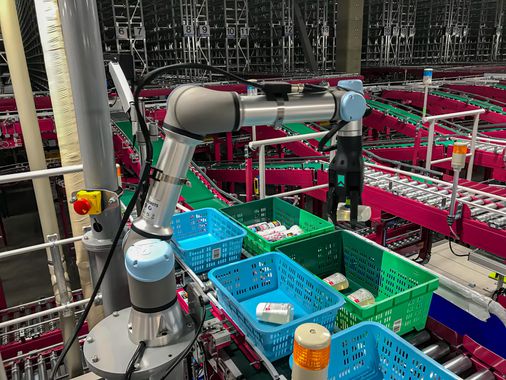For many months, I’ve been hearing about the rise of warehouse robots, and how the pandemic is spurring the trend. So, when a local warehouse robotics startup announced this week that it raised millions to grow, I wanted to ask how the scene is shaping up amid increased competition.
To do that, I talked with Leif Jentoft. He’s the cofounder and chief strategy officer of RightHand Robotics, a Somerville firm that makes robots that pick and sort goods on warehouse assembly lines. The company started in 2015, and this week it raised $66 million — at a $240 million valuation — to grow its product line and expand globally.
Jentoft said this is a unique moment for the logistics robot industry. The pandemic has prompted a resurgence in online ordering, fueled labor shortages, and snarled supply chains. Fulfilling orders on time has been difficult, and the pressure to do so is fierce, compelling companies to automate their logistics centers.
“Growth is enormous at the moment,” he said. “It’s super, super crucial to be able to deliver a better customer experience as people are doing more and more of their shopping online.”
Jentoft believes this will be a boon for Boston. The city is a powerhouse in advanced robotics, notably due to companies like Boston Dynamics and iRobot. But now, it’s evident how strong the region has become in warehouse automation, dating back to Kiva Systems (now Amazon Robotics). “Boston is the best place in the world to build a logistics robotics company,” he said. “You got a very strong talent pool from local universities, and there’s a critical mass of companies that all work in robotic applications.”
Customers are taking notice, he said. There are at least a half-dozen local companies in the sector, drawing business to the region. “We’ll frequently have customers come by and go to the ‘Tour de logistics’ and visit all these companies in the area,” he said. “It’s a one-stop shop.”
Jentoft said he does not believe the market is saturated, since only 5 percent of the warehouses in the United States are automated.
But he believes the industry is shifting. Logistics robot companies are no longer trying to create a fully automated assembly line, he said. Rather, they are focusing on creating robots to automate a specific part of the order fulfillment process — such as storage or picking and sorting — and then making sure those robots can be compatible with others. The use cases for practical robots are also evolving, Jentoft said, noting that construction companies are starting to use robots to automate tasks like drywall hanging.
As for the worry that logistics robots will put everyday Americans out of a job, Jentoft disagrees (not surprisingly). “People and robots are typically good at different things,” he said, noting that automating warehouses allows them to create jobs that are less manual and more strategic in nature.
“We can have higher-paying jobs that are more interesting,” he said. “While stripping away the rote labor.”
Pranshu Verma can be reached at pranshu.verma@globe.com. Follow him on Twitter @pranshuverma_.
Credit: Source link





















